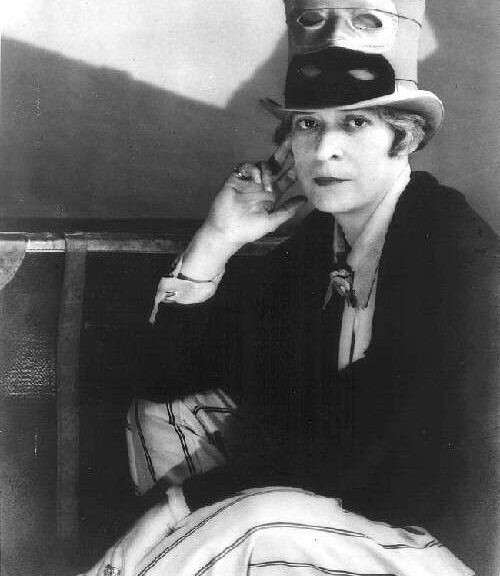JANET FLANNER, who was born on this date. (d: 11/7/1978) was an American writer and pioneering narrative journalist who served as the Paris correspondent of The New Yorker magazine from 1925 until she retired in 1975. She wrote under the pen name “Genêt“. She also published a single novel, The Cubical City, set in New York City. She was a prominent member of America’s expatriate community living in Paris before WWII. Along with her longtime partner Solita Solano, Flanner was called “a defining force in the creative expat scene in Paris”. She returned to New York during the war. Flanner split her time between there and Paris until her death in 1978.
Janet Flanner was born in Indianapolis, Indiana, to Frank and Mary Ellen Flanner (née Hockett), who were Quakers. After a few years traveling with her parents, she enrolled in the University of Chicago in 1912. She left the university in 1914. Two years later, she returned to her native city to take up a post as the first cinema critic on the local paper, the Indianapolis Star.
While in New York, Flanner moved in the circle of the Algonquin Round Table, but was not a member. She also met the couple Jane Grant and Harold Ross, through painter Neysa McMein. It was based on this connection that Harold Ross offered Flanner the position of French Correspondent to The New Yorker.
After these early years spent in Pennsylvania and New York in her mid twenties, Flanner left the United States for Paris.
In September 1925 Flanner published her first “Letter from Paris” in The New Yorker, which had been launched the previous February. She would be professionally linked with the magazine for the next five decades. Her columns covered a wide range of topics, including artists, performances, and crime, including a lengthy feature on murderesses Christine and Léa Papin. She also published several installments about the Stavisky Affair. Flanner was also known for her obituaries—examples include those of Isadora Duncan and Edith Wharton.
Flanner had first come to the attention of editor Harold Ross through his first wife, Jane Grant, who was a friend of Flanner’s from the Lucy Stone League. This organization fought for women to preserve their maiden names after marriage, in the manner of Lucy Stone. Flanner joined the group in 1921. Ross famously thought Flanner’s pen name “Genêt” was French for “Janet”.
Her New Yorker work during World War II included not only her famous “Letter from Paris” columns, but also included a seminal 3-part series in 1936 profiling Hitler.
After Hitler invaded Poland on September 1, 1939, Flanner moved back to New York City, where she lived with Natalia Danesi Murray and her son William Murray. She still wrote for The New Yorker, analyzing radio broadcasts and print reports about life in wartime Paris. She returned to Paris in 1944, contributing a series of weekly radio broadcasts entitled Listen: the Women for the Blue Network during the months following the liberation of Paris in late August 1944. Flanner covered the Nuremberg trials (1945) for The New Yorker.
In 1918, Flanner married William “Lane” Rehm, a friend she had met while at the University of Chicago. He was working as an artist in New York City, and she later admitted that she married him to get out of Indianapolis. The marriage lasted for only a few years and they divorced amicably in 1926. Rehm was supportive of Flanner’s career until his death.
In 1918, the same year she married her husband, she met Solita Solano in Greenwich Village. The two women became lifelong lovers, although both also became involved with other lovers throughout their relationship. Solano was drama editor for the New-York Tribune, and also wrote for National Geographic.
In 1932 Flanner fell in love with Noël Haskins Murphy, an American singer who lived in a village just outside Paris. They had a short-lived romance. This did not affect her relationship with Solano.
Flanner lived in Paris with Solano, who put away her own literary aspirations to be Flanner’s personal secretary. They lived together for more than 50 years, but their relationship was not monogamous. In 1940, Flanner met Natalia Danesi Murray; their romance lasted until Flanner’s death in 1978, though Flanner always had several relationships at a time. “You complain that I have three wives and the truth is, as you know, that I also have a husband, The New Yorker,” Flanner once wrote to Murray.
Flanner frequently visited Los Angeles, where her mother Mary Flanner lived at 530 East Marigold St. in Altadena with her sister, poet Hildegarde Flanner, and brother-in-law, Frederick Monhoff. Flanner was a chain smoker.
In 1975, she returned to New York City permanently, to be cared for by Murray. Flanner died on November 7, 1978. She was cremated. Her ashes were scattered along with Murray’s over Cherry Grove in Fire Island where the two women had met in 1940.
